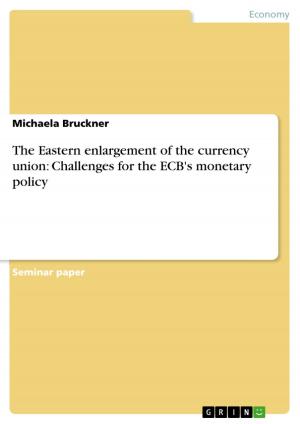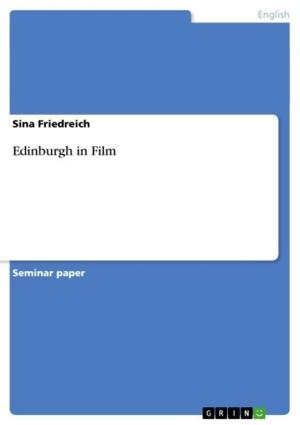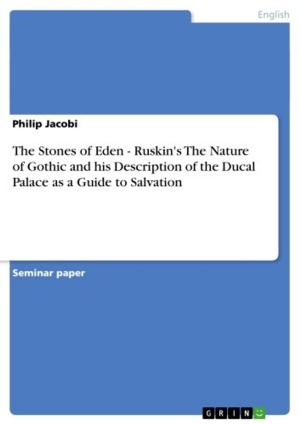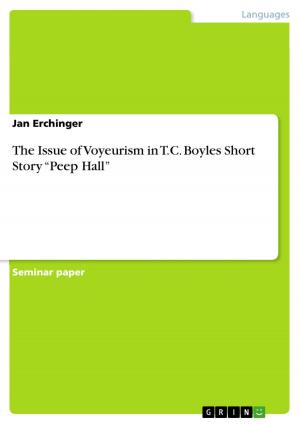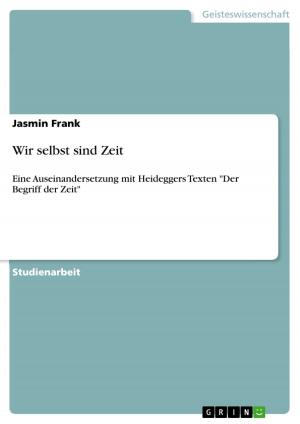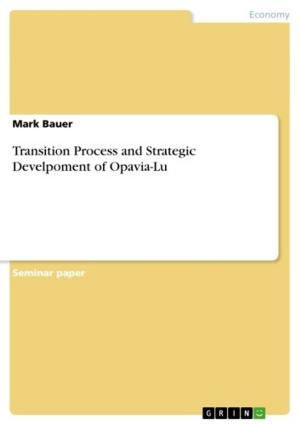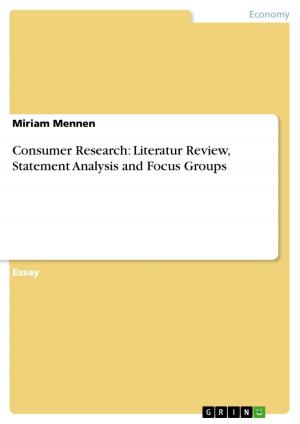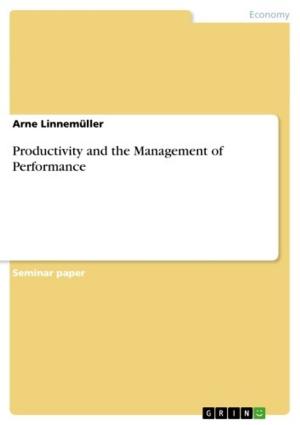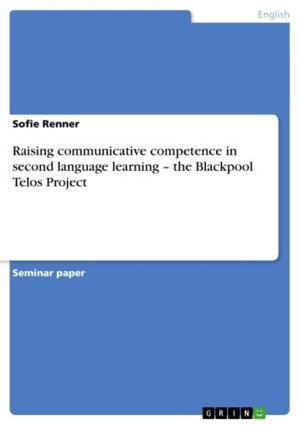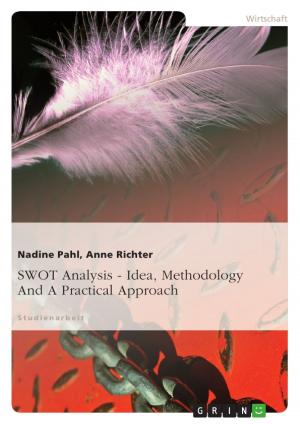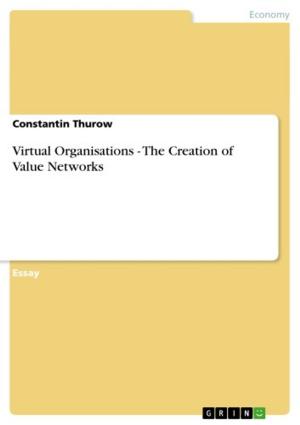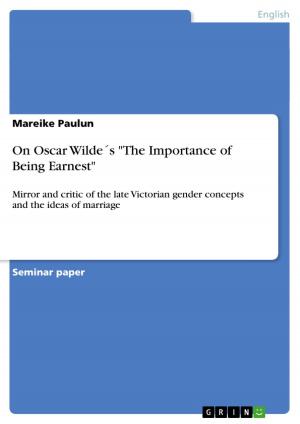Comparison between 'When Hitler Stole Pink Rabbit' and 'Life Is Beautiful'
Fiction & Literature, Literary Theory & Criticism, British| Author: | Anastasia Deibert | ISBN: | 9783638040020 |
| Publisher: | GRIN Publishing | Publication: | April 24, 2008 |
| Imprint: | GRIN Publishing | Language: | English |
| Author: | Anastasia Deibert |
| ISBN: | 9783638040020 |
| Publisher: | GRIN Publishing |
| Publication: | April 24, 2008 |
| Imprint: | GRIN Publishing |
| Language: | English |
Seminar paper from the year 2006 in the subject English Language and Literature Studies - Literature, grade: 1,7, University of Stuttgart (Institut für Literaturwissenschaft/ Neuere Englische Literatur), course: Introduction to Children's Literature, 7 entries in the bibliography, language: English, abstract: In the following pages I want to show the similarities and differences between the book 'When Hitler Stole Pink Rabbit' by Judith Kerr and Roberto Benigni's film 'Life Is Beautiful'. These two personal statements of Judith Kerr and Roberto Benigni already show that their works are a bit different. Therefore I will concentrate both as well on the shared features as on the distinct ones. The romantic fairy tale 'Life Is Beautiful' won Academy Awards for Best Music and Best Foreign Language Film and Benigni won Best Actor for his role. It was also the winner at the Cannes Film Festival in 1998 and it won the Best Jewish Experience Award at the Jerusalem International Film Festival. After a short comparison of the characters, the setting and time I will continue with the problems a family have when living a life in exile. Afterwards, I will analyse both works with reference to the attitude of life and to the family togetherness. Furthermore, I will try to examine the contrasts between 'When Hitler Stole Pink Rabbit' and 'Life Is Beautiful' regarding fantasy and reality and the question arises as to whether the children can be considered as victims. The next important aspect is the representation of the Holocaust and teaching this topic in school. Finally, I will discuss the ending of both 'Life Is Beautiful' and 'When Hitler Stole Pink Rabbit'. The conclusion will comprise the main points and some suggestions for further discussion. The main character in 'Life Is Beautiful' Guido Orefice is always in a good mood and he doesn't lose his laughter and humour even in the concentration camp. 'Life Is Beautiful' is about a happy living family that is suddenly deported into a concentration camp. But Guido wants to protect his son Giosuè from the horrors by convincing him that the camp is just a game. 'Life Is Beautiful' as well as 'When Hitler Stole Pink Rabbit' is about a Jewish family during the World War II. You can draw a comparison between Guido and the father of Anna and Max because both of them want only the best for their children. Guido protects his son from the horrors which surround them with all his power and Anna's father cares also well for his family. He is the only one who earns money in spite of the financial difficulties in Switzerland and France. Both try to hold the family together and to give the other family members emotional security.
Seminar paper from the year 2006 in the subject English Language and Literature Studies - Literature, grade: 1,7, University of Stuttgart (Institut für Literaturwissenschaft/ Neuere Englische Literatur), course: Introduction to Children's Literature, 7 entries in the bibliography, language: English, abstract: In the following pages I want to show the similarities and differences between the book 'When Hitler Stole Pink Rabbit' by Judith Kerr and Roberto Benigni's film 'Life Is Beautiful'. These two personal statements of Judith Kerr and Roberto Benigni already show that their works are a bit different. Therefore I will concentrate both as well on the shared features as on the distinct ones. The romantic fairy tale 'Life Is Beautiful' won Academy Awards for Best Music and Best Foreign Language Film and Benigni won Best Actor for his role. It was also the winner at the Cannes Film Festival in 1998 and it won the Best Jewish Experience Award at the Jerusalem International Film Festival. After a short comparison of the characters, the setting and time I will continue with the problems a family have when living a life in exile. Afterwards, I will analyse both works with reference to the attitude of life and to the family togetherness. Furthermore, I will try to examine the contrasts between 'When Hitler Stole Pink Rabbit' and 'Life Is Beautiful' regarding fantasy and reality and the question arises as to whether the children can be considered as victims. The next important aspect is the representation of the Holocaust and teaching this topic in school. Finally, I will discuss the ending of both 'Life Is Beautiful' and 'When Hitler Stole Pink Rabbit'. The conclusion will comprise the main points and some suggestions for further discussion. The main character in 'Life Is Beautiful' Guido Orefice is always in a good mood and he doesn't lose his laughter and humour even in the concentration camp. 'Life Is Beautiful' is about a happy living family that is suddenly deported into a concentration camp. But Guido wants to protect his son Giosuè from the horrors by convincing him that the camp is just a game. 'Life Is Beautiful' as well as 'When Hitler Stole Pink Rabbit' is about a Jewish family during the World War II. You can draw a comparison between Guido and the father of Anna and Max because both of them want only the best for their children. Guido protects his son from the horrors which surround them with all his power and Anna's father cares also well for his family. He is the only one who earns money in spite of the financial difficulties in Switzerland and France. Both try to hold the family together and to give the other family members emotional security.

